Hidden London: The Kingsway Tram Tunnel
Kingsway Tram Tunnel
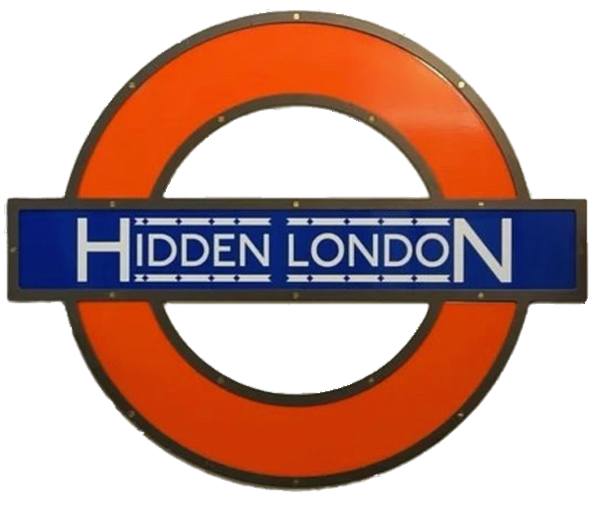
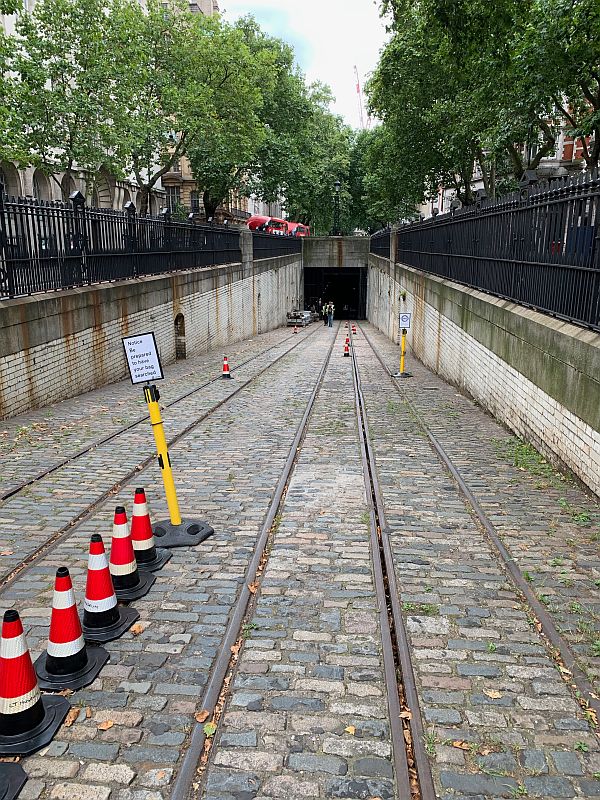
The Kingsway Tram Tunnel today.
“I have done something nobody else here today has!”
So said Bobby to fifteen visitors on the Hidden London tour together with four staff from the London Transport Museum.
He had caught there attention, but only because the guide had asked if there were any questions and got more than he expected!
“I am the only person here today who has actually been on a tram down the Kingsway Tram Tunnel. With my dad, in 1951. Just seven years old, I remember that we got off at an underground tram stop just to say we had done it.”
Clearly older than everybody else there, it wasn’t exactly a monumental achievement. The tunnel closed, with the remains of the tram network, in 1952.
Ever since those far off days he has been fascinated by the ‘ghost tunnel’ at Kingsway. Looking through the railings to see the cobble stones and tram tracks leading down into who knows what? Seventy years later, when the Hidden London team of the London Transport Museum got permission to open the tunnel to visitors, their tour was sold out before it even came on sale.
More dates were added and here we were on 18 August 2021 about to enter the secret world of ancient and ghost trams. Not here, but on Clapham Common. Neddie Seagoon, Eccles, Bluebottle, Henry Crun et al found ‘the last tram’.

Back to 2021.The museum guides gave an excellent description of the tram network of London and how it became focussed on this tunnel. Or should we say subway. The concept, and the tramcars themselves, were all born the other side of the Atlantic in New York’s extensive system.
We learned that, in class conscious London, certain forms of transport were regarded as working class. Not the sort of thing you would want in Hampstead or Belsize Park. Look at the map and note the big gaps round the posh areas.
But this story is just about Kingsway Tram ‘Subway’. Probably the most important stretch of tram track in London. It was built to link the extensive tram networks of north and south London. Trams would have to cross the river Thames on a bridge somewhere. Look at the map. Only one crossing, on Westminster Bridge. The original plan to go straight over Waterloo Bridge was abandoned and the trams went along the embankment to Westminster Bridge.
Waterloo Bridge came into the equation by being at the southern end of a massive redevelopment of Holborn and Aldwych. Originally a vast slum, the plans to completely clear it included the subway. On top of which would be built a widened road bounded by impressive large buildings in the style of the day.
The crescent at Aldwych all part of the grand design. Six hundred homes were demolished. Standing at the top of the ramp leading down to the subway, the scene is easily recognisable by pictures taken when the subway opened in 1906.
Trams were original single decker, but eventually it was decided that to continue to be an economic proposition they would need to be double decker. To achieve this, they dropped the floor of the subway by five feet and added a top deck to the existing tramcars. Simple wasn’t it over 100 years ago!
The original southern entrance to the subway was to the side of Waterloo Bridge. When the new Waterloo Bridge was built in 1937, the entrance was relocated under the bridge itself. Nowadays that entrance is a night club. Part of the southern section of the subway was converted into the Strand underpass for vehicles. The remaining section is now a listed structure and this was the first time the public had been down since it closed in 1952.
The Kingsway Tram Tunnel (Subway)
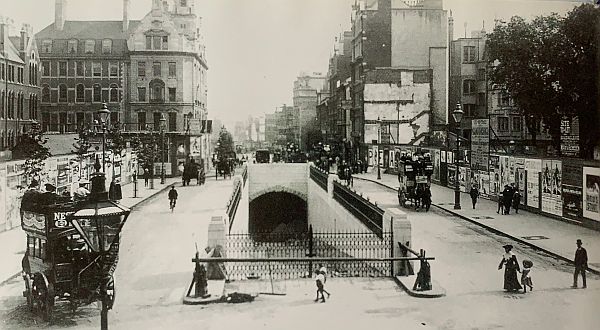
Subway… No we will call it a tunnel. This is the earliest picture we could find of the tunnel before the continued development of the entire area. Horse buses. Note the original arched tunnel entrance, compared to the later style in the photograph above.
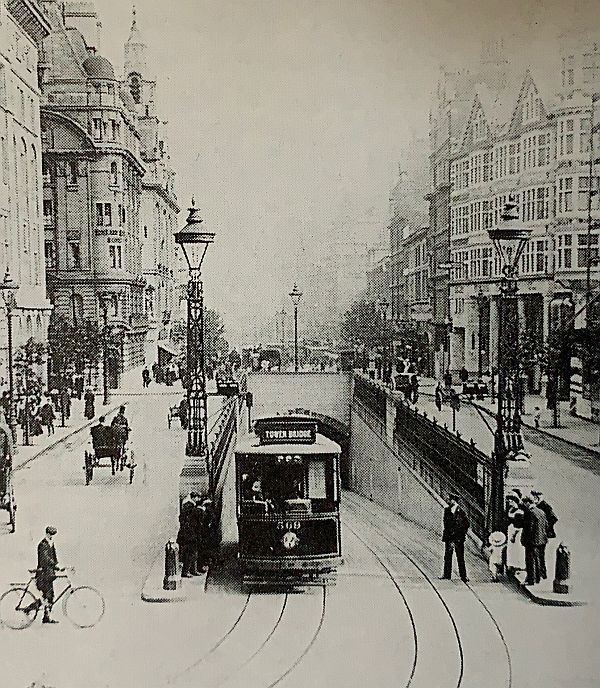
Open 1906. Note the change in the area and, in particular, three lamp standards above the tunnel.
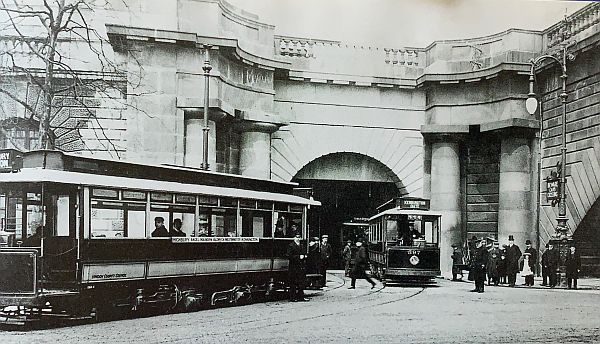
The original southern entrance to the side of Waterloo Bridge as it was in 1906.
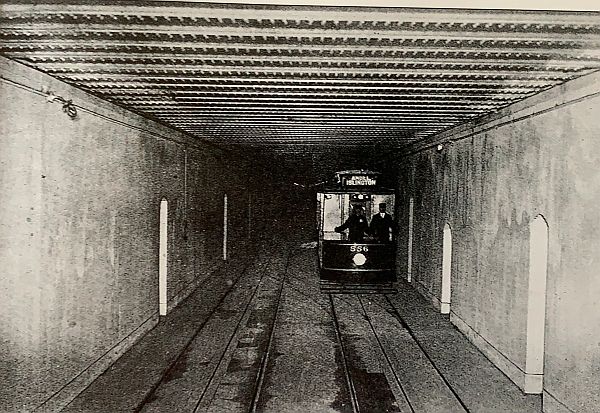
See the refuges built into the walls to create safe havens for tunnel workers if a tram came along.
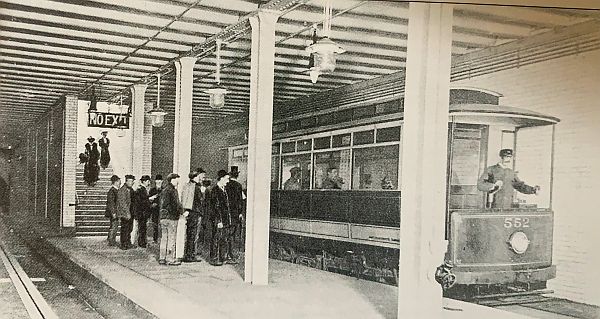
Two underground tram stops at Aldwych and Holborn accessed by stairway to the middle island of Kingsway. (See later).
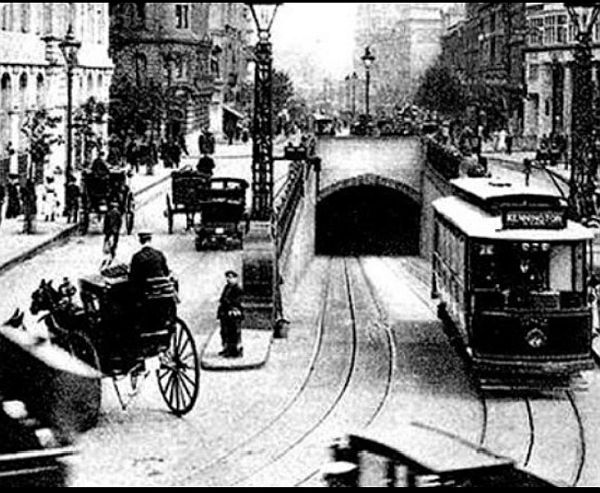
Very much a horse drawn world in 1906, when electric trams must have seemed very futuristic.

Here is the original route.
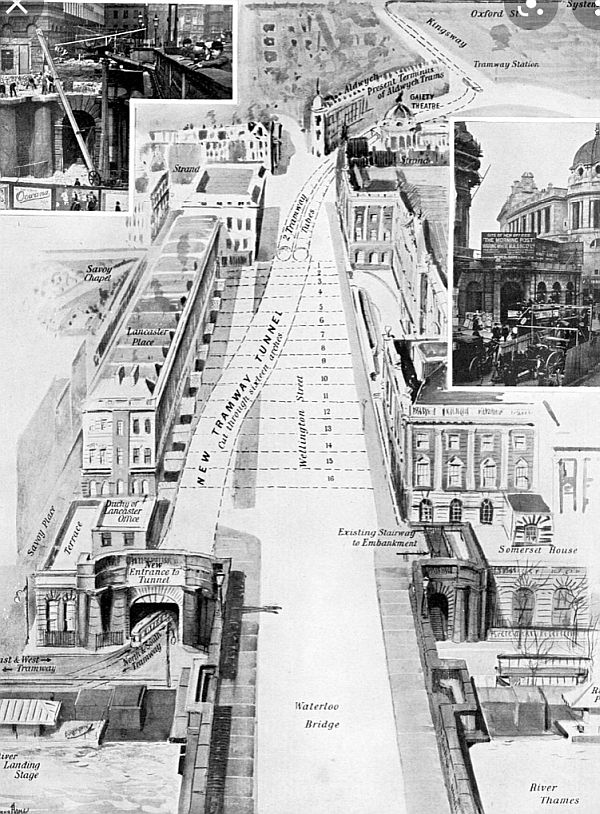
An artist’s impression of the original entrance, to the side of Waterloo Bridge, and the section of tunnel that is now the Strand underpass. The entrance to that today is on the bridge itself. Never been down it, but it does have bus route 521 passing through as seen on the following video.

Then came the double deckers in 1929. They lowered the floor of the tunnel and put an extra deck on the existing tramcars. In the tunnel, you could tell how much they had lowered the floor as the refuges were now twelve feet high!
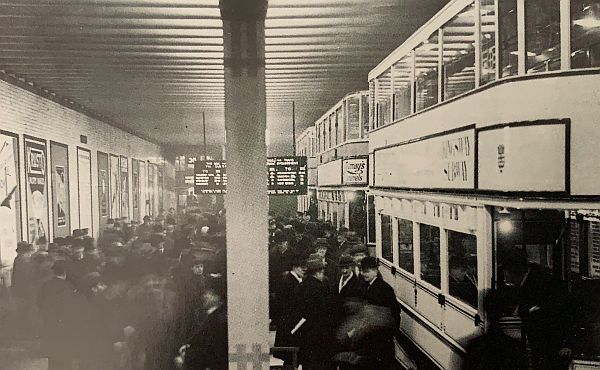
A crowded special occasion and a white tram for when they built the new southern entrance underneath the new Waterloo Bridge. Holborn tram stop.
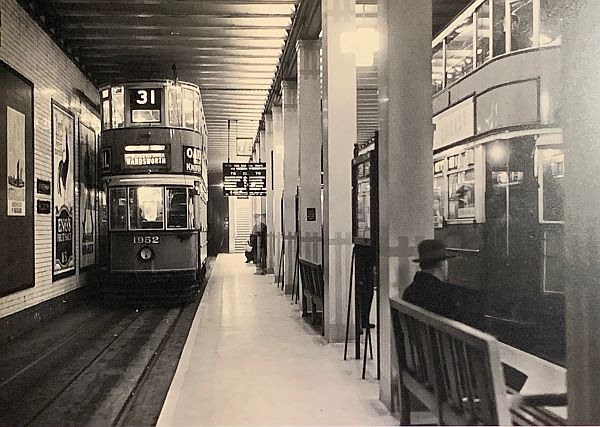
Aldwych tram stop.
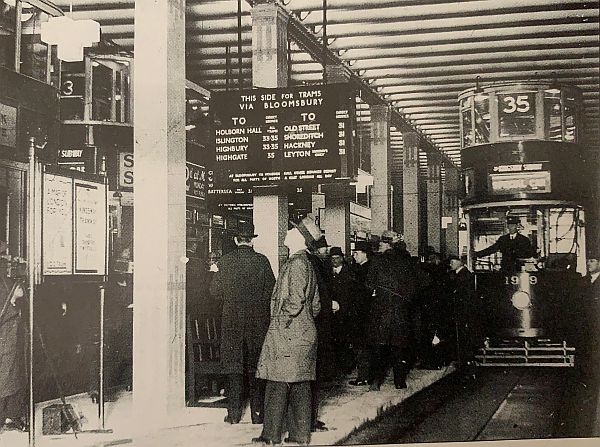
Aldwych. You could go a long way on a tram then.
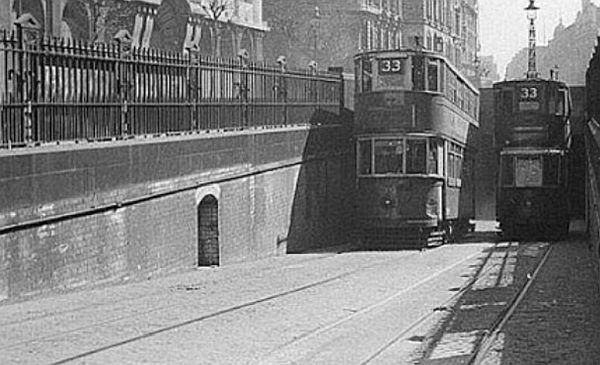
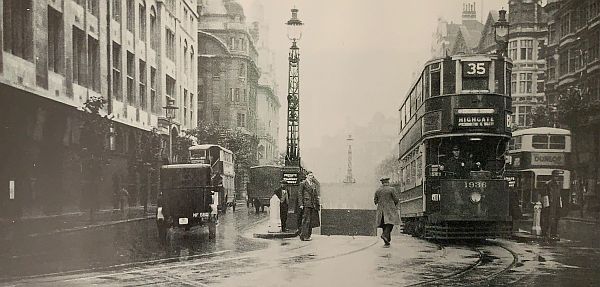
A rainy day in London town.
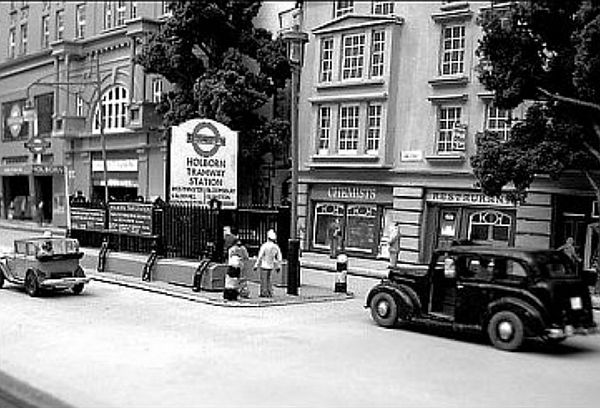
Entrance to Holborn Tram Station in Kingsway.
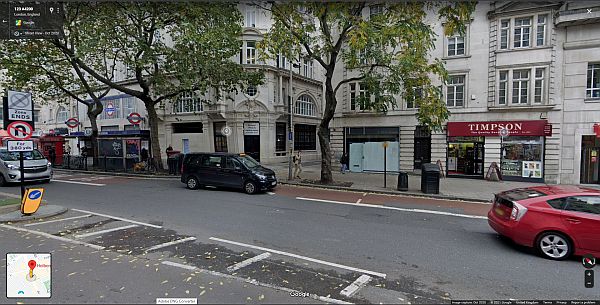
The above scene today taken from Google Streetview.
The Hidden London Tour
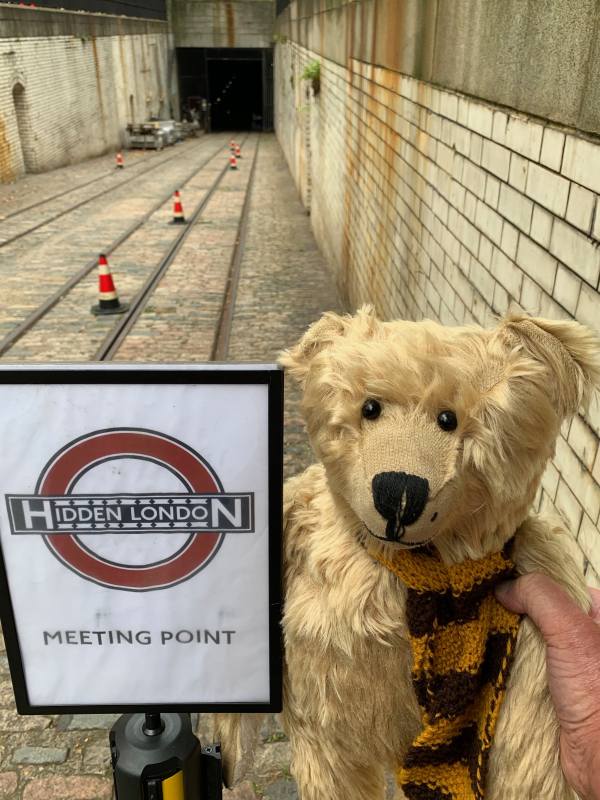
All ready. Excitement gathering.
I was excited too!
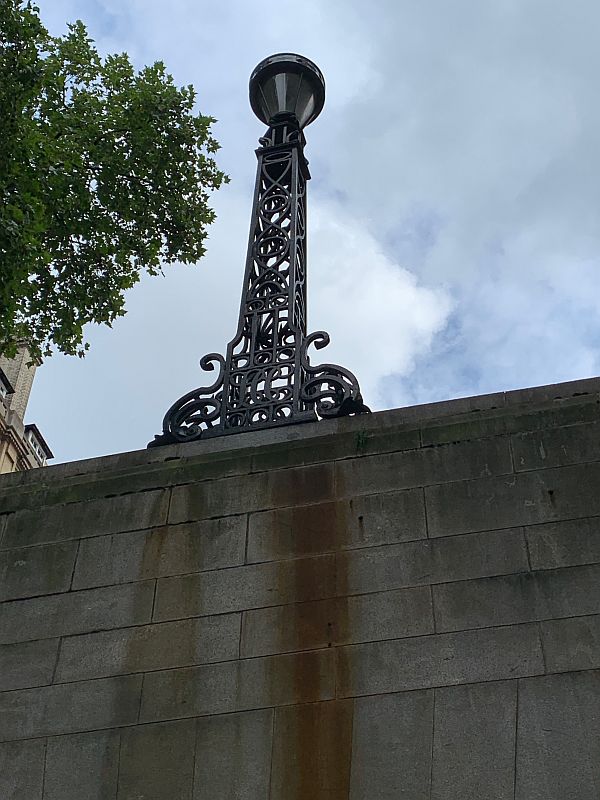
Look up. The original lamp standard from 1906.
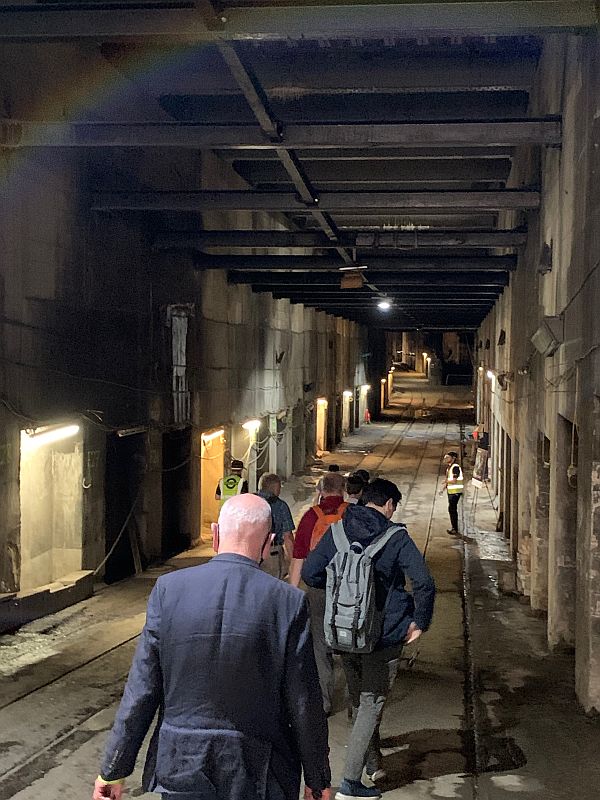
Down we go. All given a torch (returned later) for health and safety as parts were a bit gloomy.
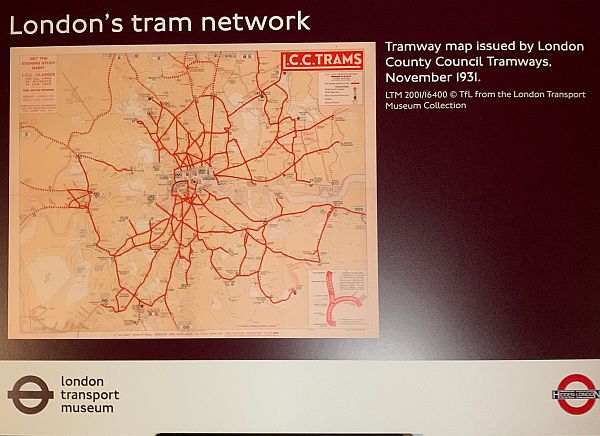
Tram networks, showing the gaps around posh areas.
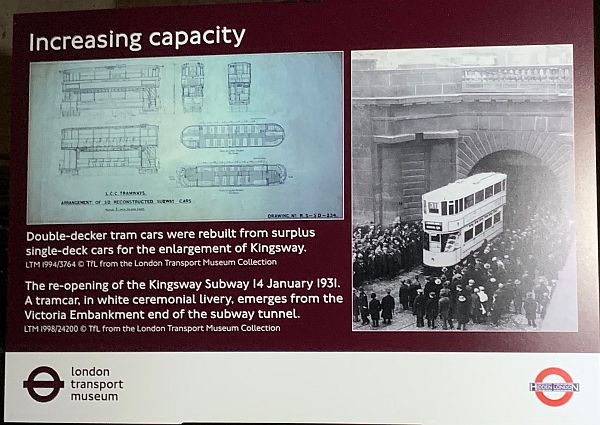
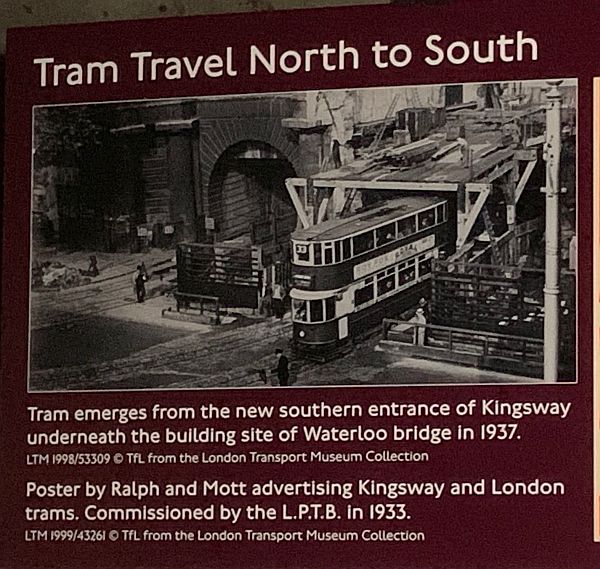
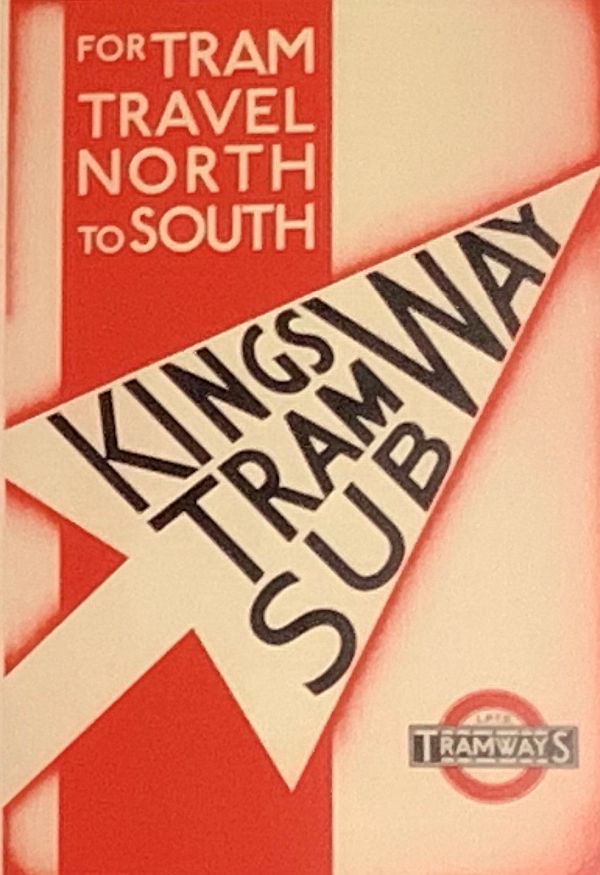
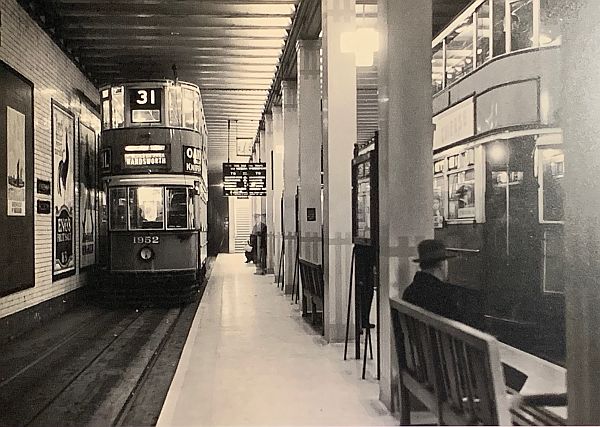
Aldwych tram stop then…
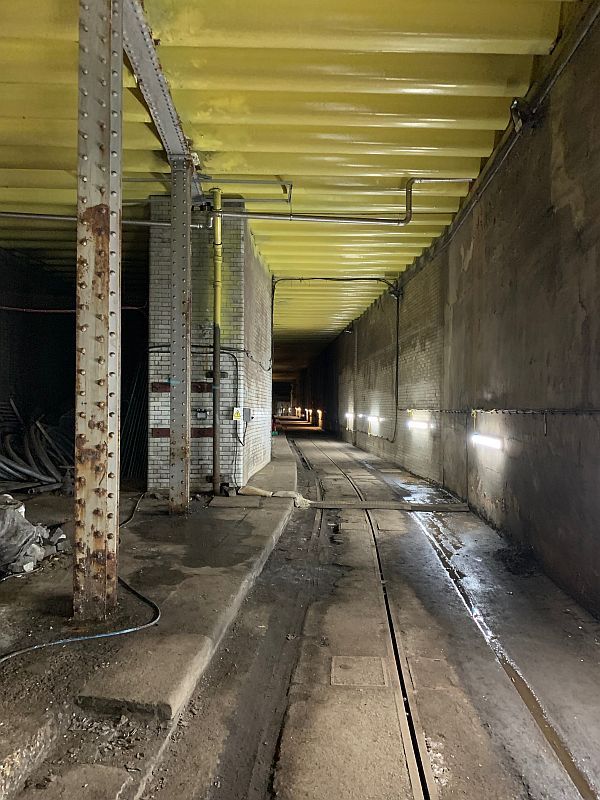
…and now.
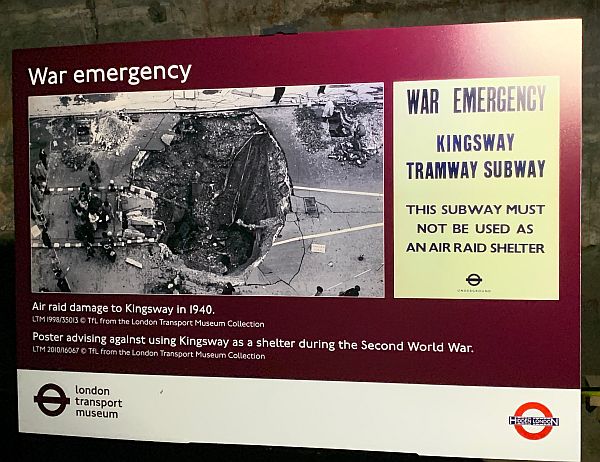
A cut and cover tunnel was no protection as an air raid shelter.
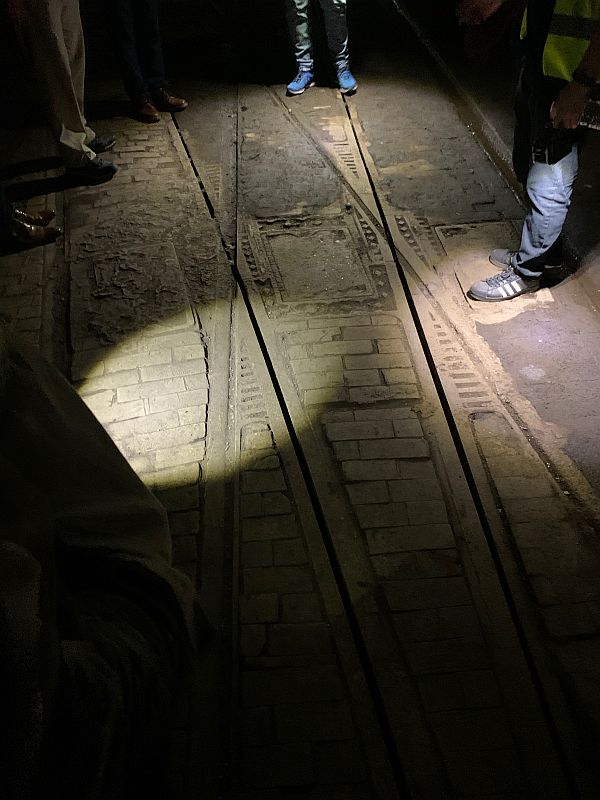
The rails are still there and the points that had to be changed by a points man with a large lever.
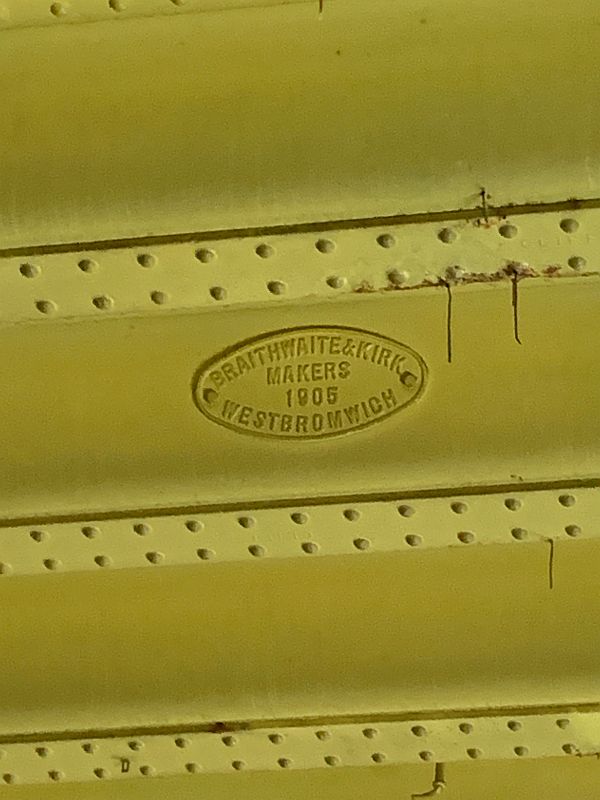
The cut and cover roof just as it was in 1906.
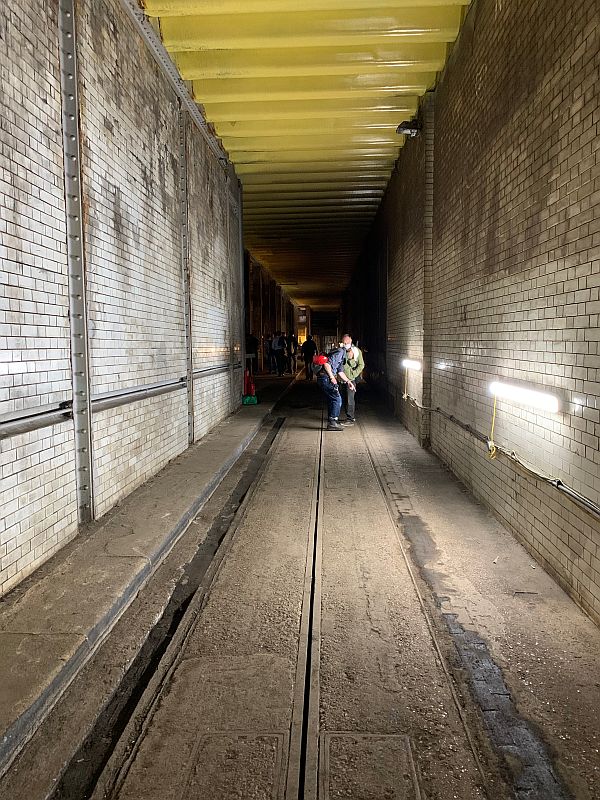
The conduit rail in the centre supplied electricity. Trams had a choice of this, or overhead as most modern trams today. Why conduit? Because Londoners didn’t like the wires and posts of overhead equipment! Purely on aesthetic grounds. Conduit was more problematic. Particularly if you were riding a bike above ground and got stuck in the grooves. They were also prone to fill with rubbish.
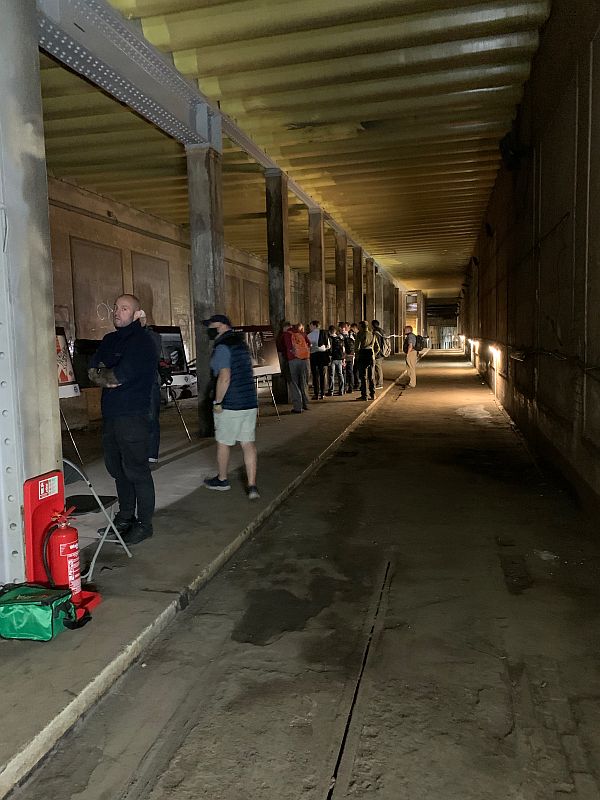
Holborn tram stop.
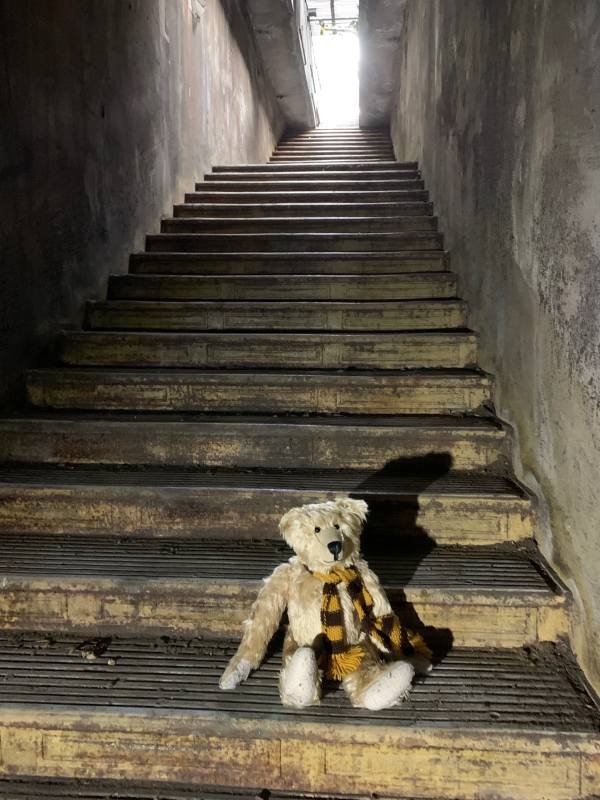
Stairway to Aldwych tram stop.
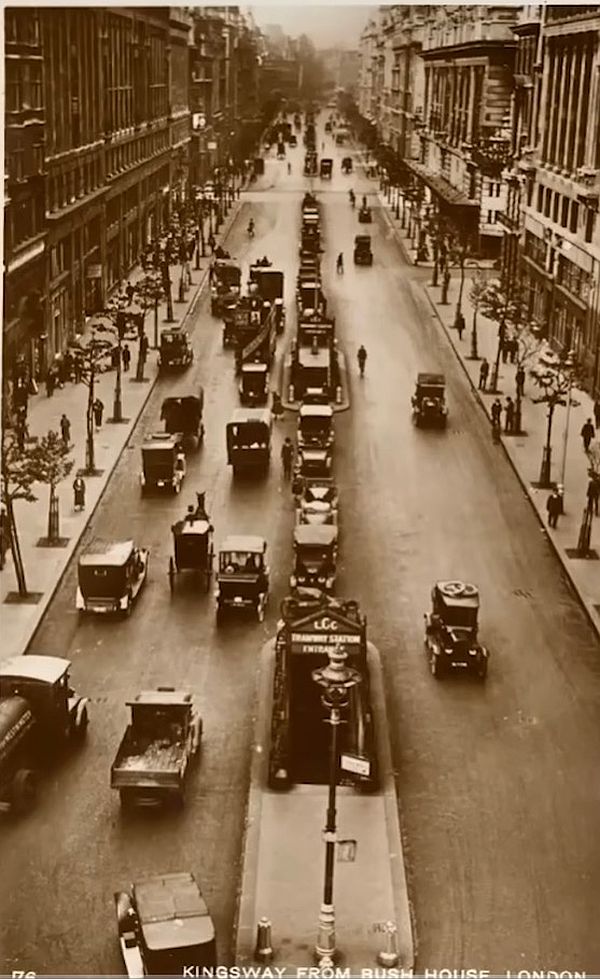
The entrance to Aldwych tram stop precariously positioned in the middle of a busy road.
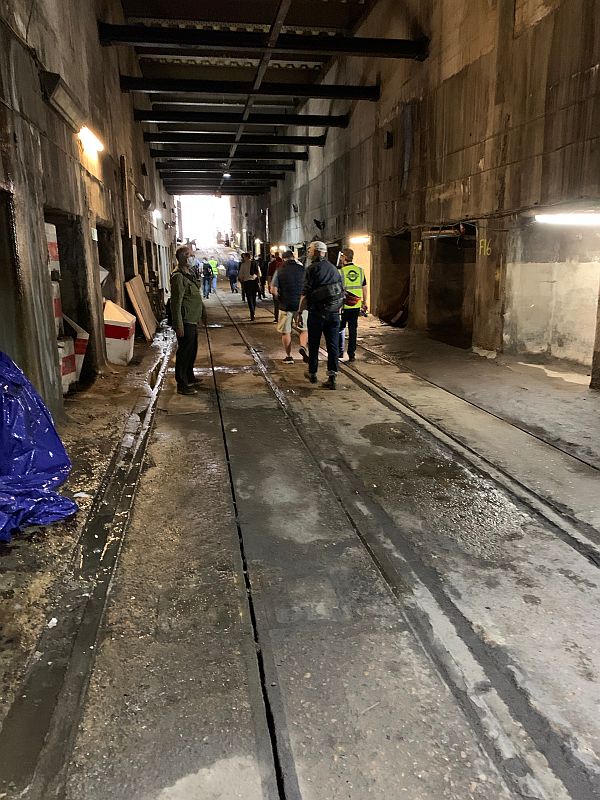
End of the tour.
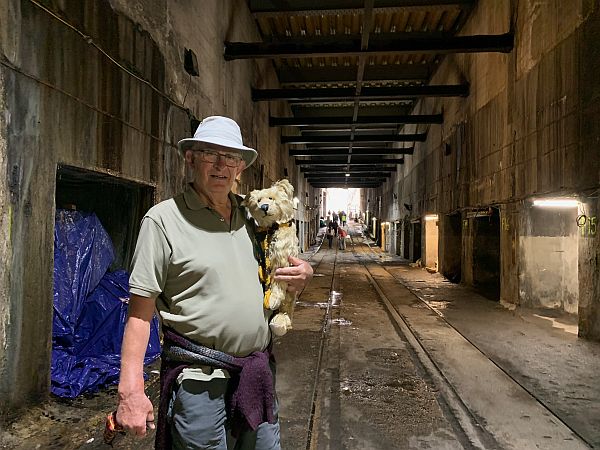
Breathe in, Bobby!
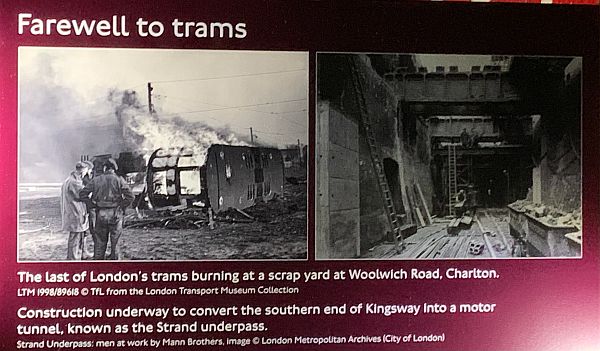
1000s of trams were unceremoniously scrapped/destroyed.
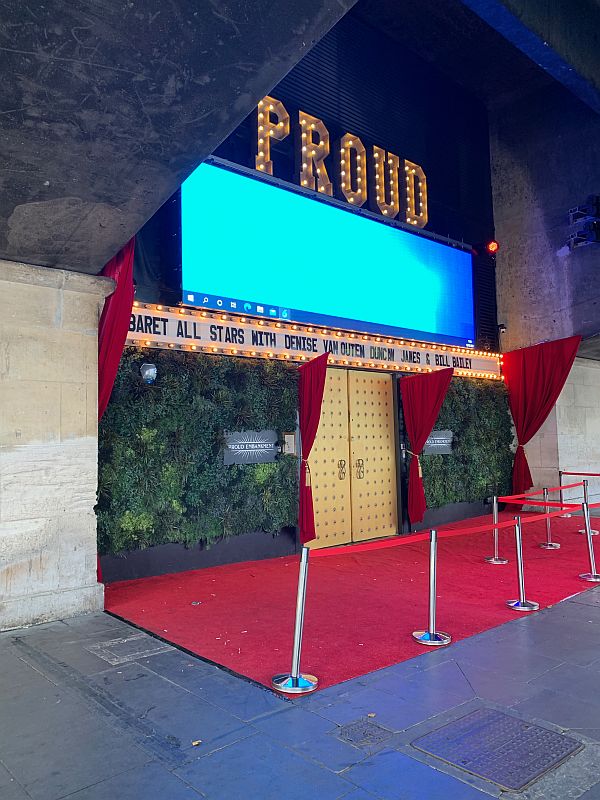
The southern entrance under Waterloo Bridge is now a nightclub.
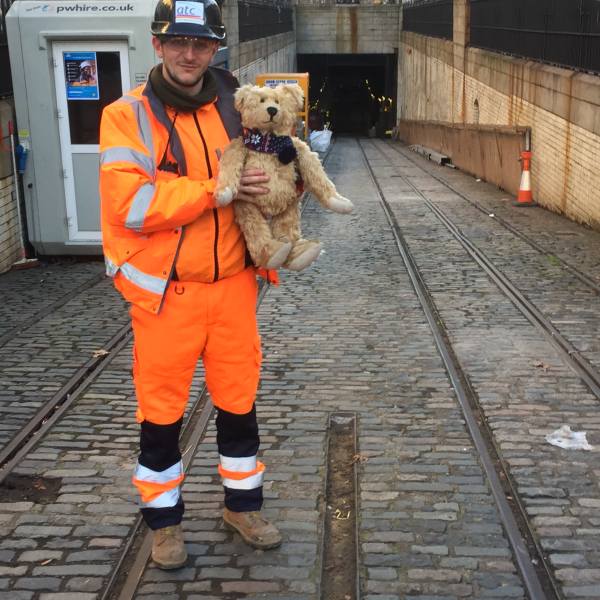
Back in 2017, we were on a bus and noticed the tunnel gates were open and jumped off quick. We know now that this was when Crossrail were using the tunnel to bore down even lower to that project. This chap may well look bemused. He didn’t speak English. Never dreamt that day we would ever be allowed down there.
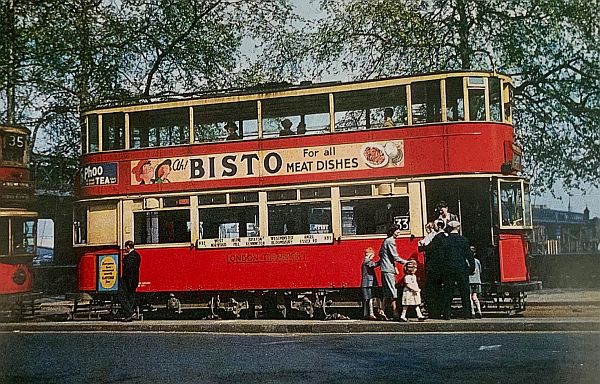
1951. The year Bobby rode on a London tram down the Kingsway Tunnel. This picture on the Embankment shows a tram after leaving the tunnel heading for Westminster Bridge.
Bertie: “Corr Bobby . Just imagine the view from upstairs. You must have been about the same age as the boys in the picture. Isn’t it a shame they have all gone!”
Bobby: “Not all, Bertie. One is in the London Transport Museum at Acton and you have actually seen it.”
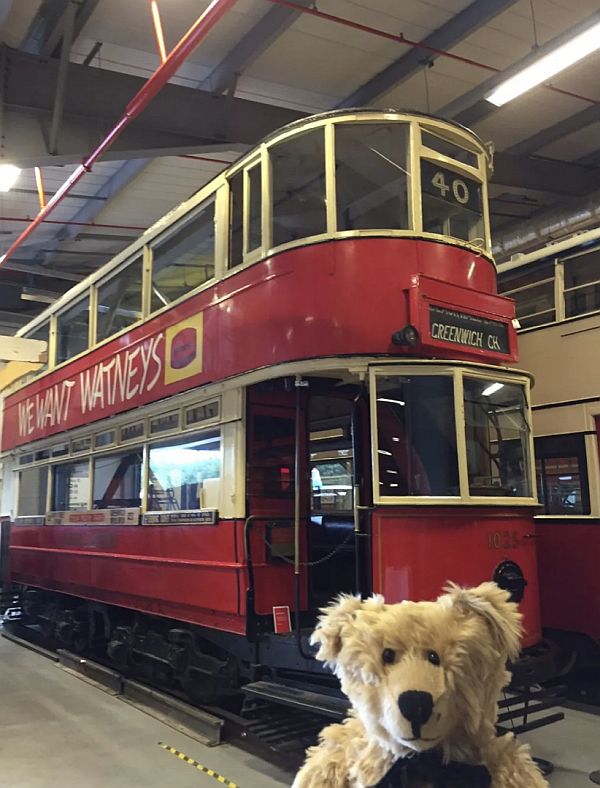
London Transport Museum. Acton Depot. Limited opening.
Bobby: “But most importantly, there is still one working. Restored at enormous expense by the National Tramway Museum at Crich. I have actually been on it.”
Bertie: “You never took me!”
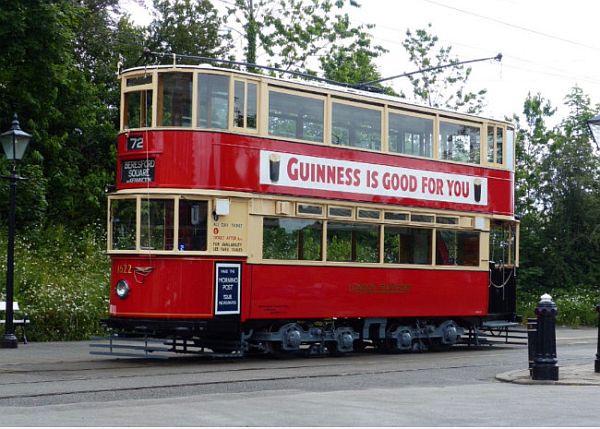
Bobby: “It was before we started writing stories. It closes soon for the winter. I promise to take you there next spring.”
The National Tramway Museum Crich, Derbyshire.
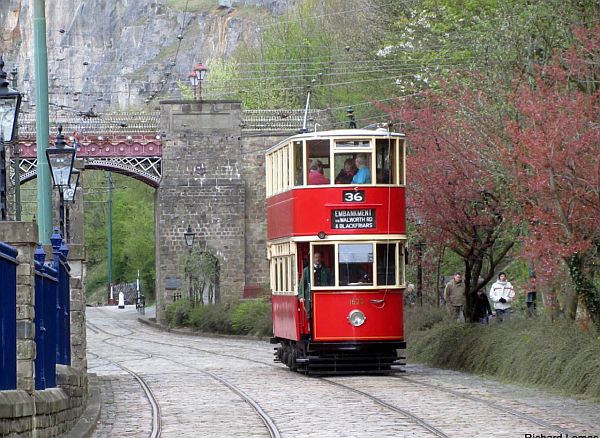
Wonderful tramway museum and village at Crich. Highly recommended.
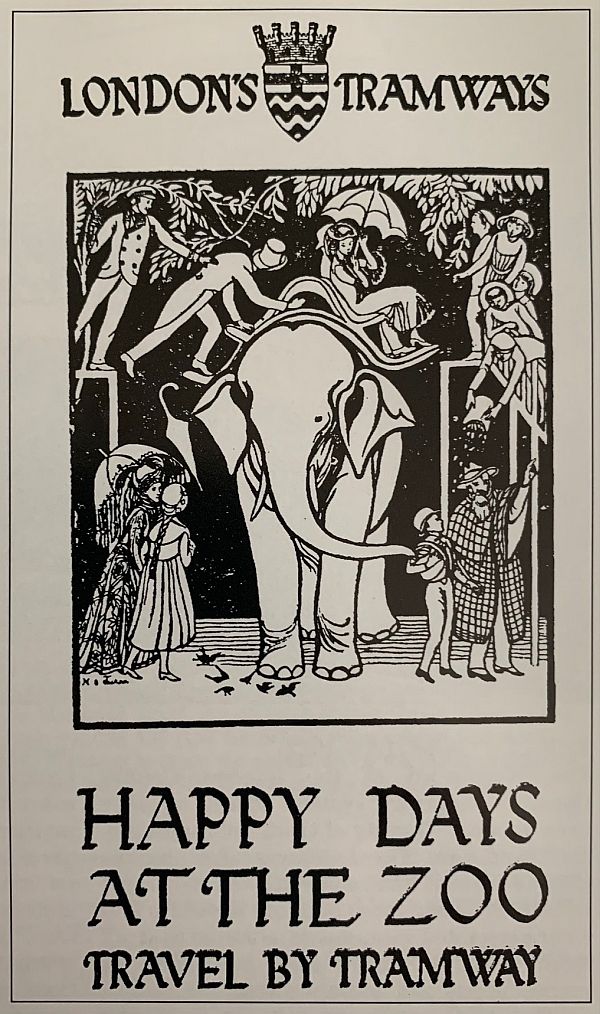
But once there were trams…
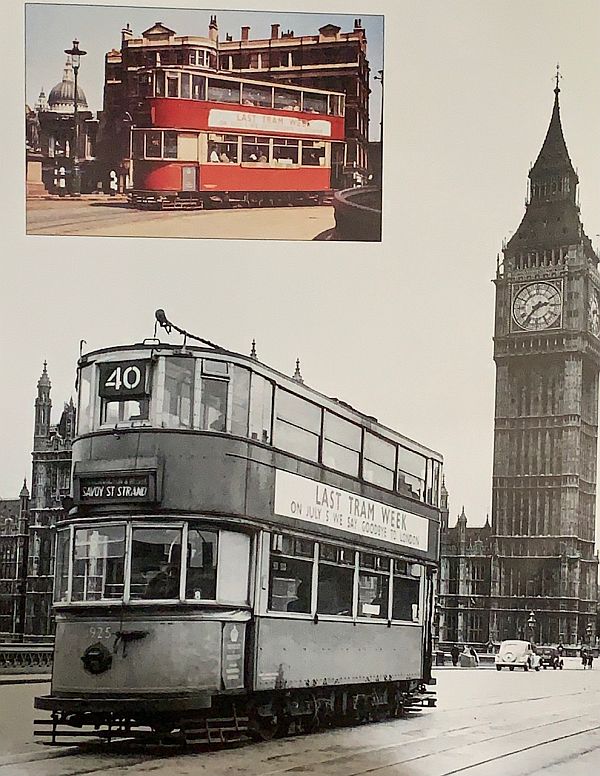
…that went over Westminster Bridge until 1952.
Film Show
We have had a fantastic time putting this story together. Our research has led to a number of films/clips. What ever you do, make sure you watch the first one. ‘Remembering London’s Trams’, that includes the iconic film ‘The Elephant will never Forget’. The last day of London Trams.
Most of the films include the Kingsway tunnel.
Remembering London’s Trams

‘Hidden London’ goes to the Kingsway Tunnel

‘Unfinished London’ (quirky but worth watching)

Short clip showing the tunnel and a very gloomy fifties London

Crossrail in The Kingsway Tunnel

Bobby’s Toys
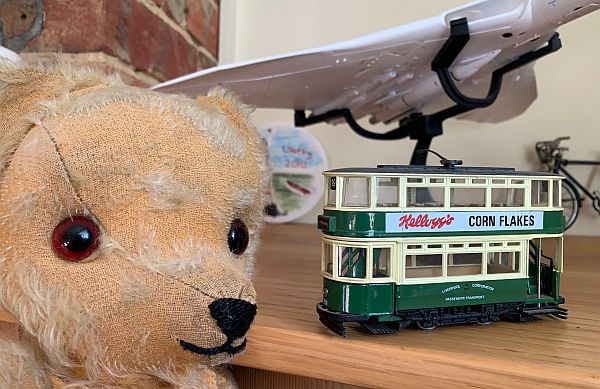
“Feckin hell, Bobby. ‘Tis a tram from Liverpool where I grew up, like most Irish people. I remember trams. They carried on there until 1956.”
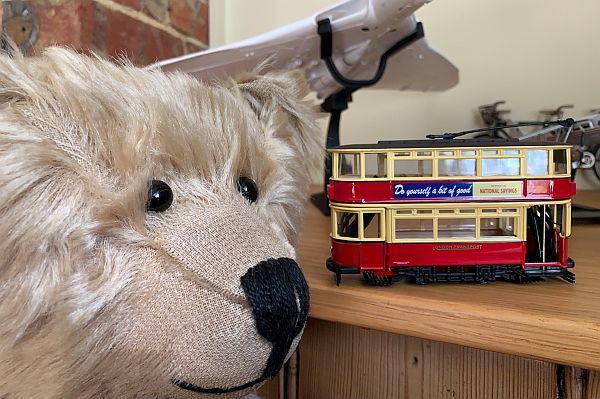
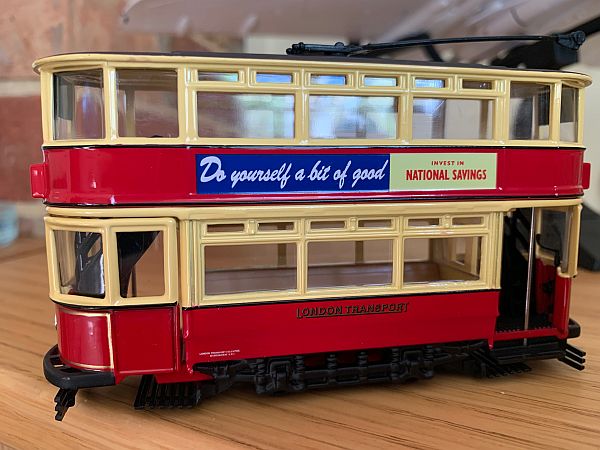
You won’t believe it. He said he needed a London Tram for the story. So he bought one. Wonderful! Must go to Crich again.
Lighting a Candle for Diddley
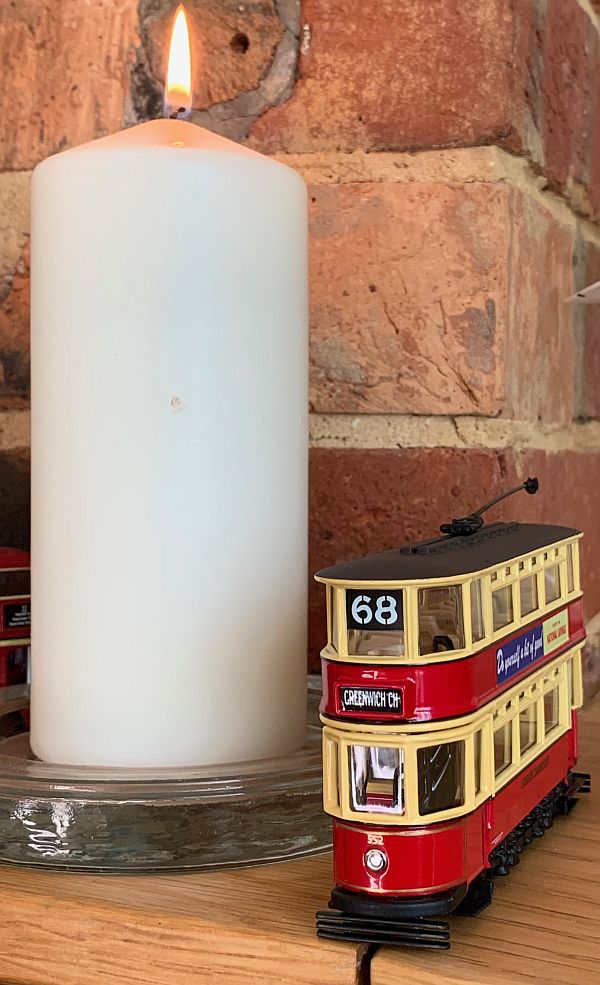
—————
- ← Morning Glory
- Cats →







Fascinating. I used to love the trams when we visit Granny in Sunderland. The terminus was at the bottom of her street.
Amazing bits of film and pictures. Enjoyed this weeks blog.
Very interesting blog, Bobby. Answers all those questions in the back of my mind for years about that entrance way. Thank you for a delightful piece.
Very interesting, however neither of the preserved London trams you show ran through the Kingsway Subway as they have timber bodies and only all metal trams were allowed through the subway. The E3 type of car was almost exclusively used on subway services and none were preserved. The HR2 type car No.1858 preserved at Carlton Colville (near Lowestoft) does have signs indicating it could have run through the subway, but there are no records of it actually having done so, it’s body is identical to an E3. The only preserved tram known to have run through the subway, on an enthusiasts special, is No.1 at Crich TramwY Village.
Thank you. Very interesting. Carlton Colville is on my list for a Suffolk holiday later this year. As a matter of interest have you ever been on a tram down the Kingsway Tunnel as I did in 1951.
I remember riding on the tram top deck through that tunnel around 1950. Shame it was not preserved along with some trams – what a tourism draw card that would be!
I’ve driven the Kingsway Tunnel many times and had often wondered what the railings hid further north, now I know and wonder why the road tunnel wasn’t extended to use the whole length, perhaps to allow access to Holborn !!